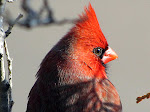http://birds.joy.net/photo/female-painted-bunting?xg_source=activity
As one who is guilty of having once caged birds as pets, my conscience
compels me to address the issue of trapping, smuggling, and keeping them as
pets.
Back in 1962, at the age of five, I came home to discover a new resident in
our home. My grandmother had acquired a white parakeet. It was love at first
sight for me. She told me that his name was Pretty Boy and that I could teach
him to talk. I didn’t, for one second, believe that it could talk; however, I
did spend countless hours watching it hop around in its tiny cage. I often
begged my grandmother to let it out of its cage so I could watch it fly. She
always denied my requests. Of course, I eventually took it upon myself to just
open the cage door and watch. After seeing what it took to get Pretty Boy back
in his cage, I decided I would never do that again.
In the mid-eighties, I discovered the pet store world of exotic finches, and became addicted to
collecting pairs of so-called Australian finches: Masked Finches, Shaft-tail Grassfinches, Black-throated Finches, and Chestnut-breasted Mannikins just to name a few. I studied them, studied about them, and spent
thousands of dollars and hours in collecting and maintaining them. I turned a
spare bedroom of my home into what I called the birdroom. The birdroom contained
about twenty relatively large cages. The wall-to-wall carpet was covered with
wall-to-wall clear plastic matting, the walls were painted with washable satin
paint, Vita-Lite full spectrum lighting was installed, and in the center of the
birdroom sat a huge cage lined three quarters up in clear thick plastic. It
contained the biggest “exotic finch” I ever acquired: a Dusky Lory.
As time passed, I soon realized that could not sell them because of the
emotional attachment of having watched them go from egg to full feather. Finally,
due to job relocation, I ended up giving them to the breeder who had gotten me
started and had taught me so much.
Now, decades later, I somewhat—but not totally—regret my contribution to
illegal bird trafficking, and although I didn’t personally bring them here from
their native countries, I rather shamefully see my birdroom as just a little
more than a well-kept bird prison.
I still have a lot of birds at my home, but they now come and go as they
please. I especially love it when parents bring their new offspring to my
feeders and when I see one of them splashing around in my bird bath on a hot
summer day.
As far as bird trappers and smugglers are concerned, I wish I could make
them stop endangering every bird species. At the same time, I wish these same
trappers could be employed to good use. I wish we could capture and facilitate
the breeding of endangered bird species to the point where they would no longer
be even remotely endangered. I wish secure environments could be created to
facilitate the proliferation of endangered bird species regardless of source of
threat. I know that many species of birds will not breed in captivity; however,
if humans can build a ski resort in the
middle of the desert, why
can’t humans build a Painted Bunting habitat in Florida. The question is really
not a question, because I know the answer: money.
If I were King of the World, though, a bird’s life would be more coveted
than money: sort of like the age-old reality of money being more coveted than
human life.
When his wing is bruised and his bosom sore,
When he beats his bars and would be free;
It is not a carol of joy or glee,
But a prayer that he sends from his heart's deep core,
But a plea, that upward to Heaven he flings –
I know why the caged bird sings. ---Paul Laurence Dunbar
http://www.youtube.com/watch?v=mux5YhT2MRk

No comments:
Post a Comment